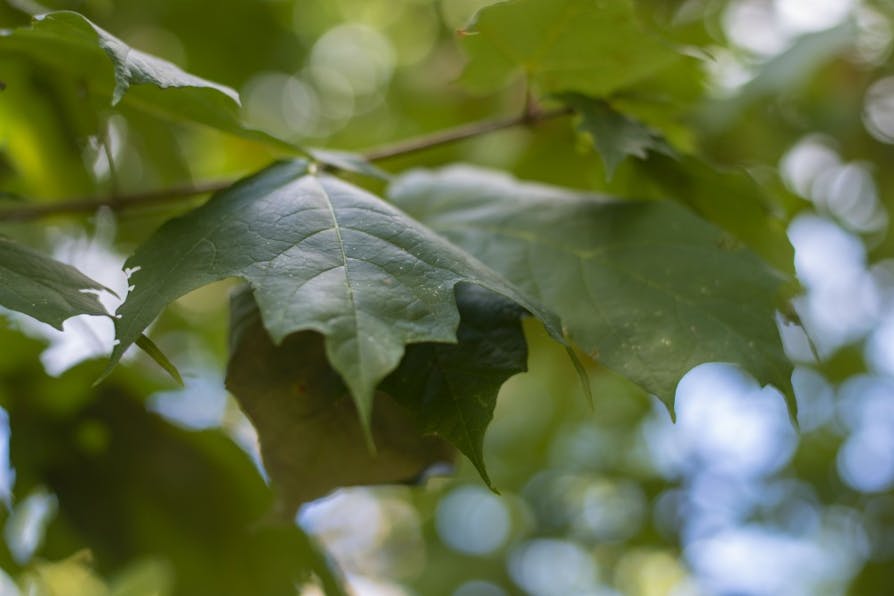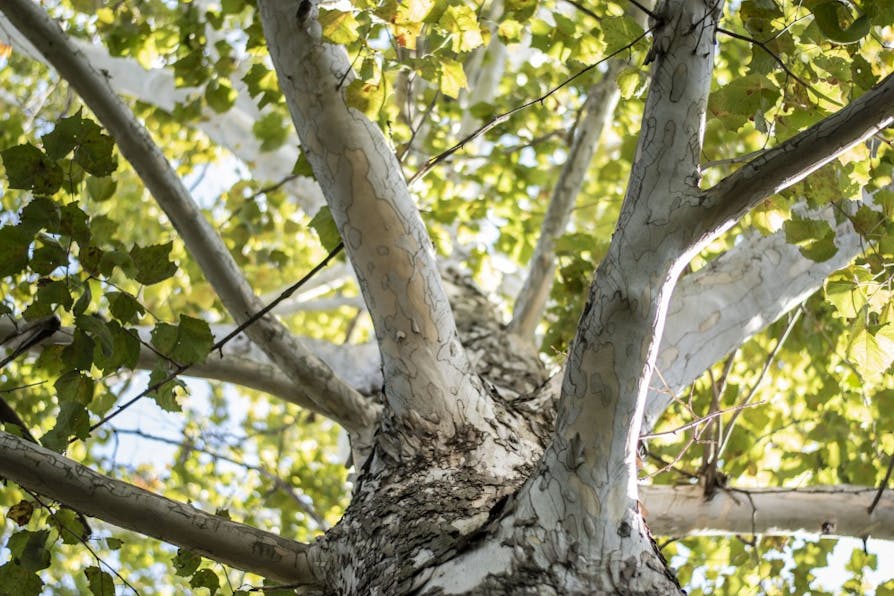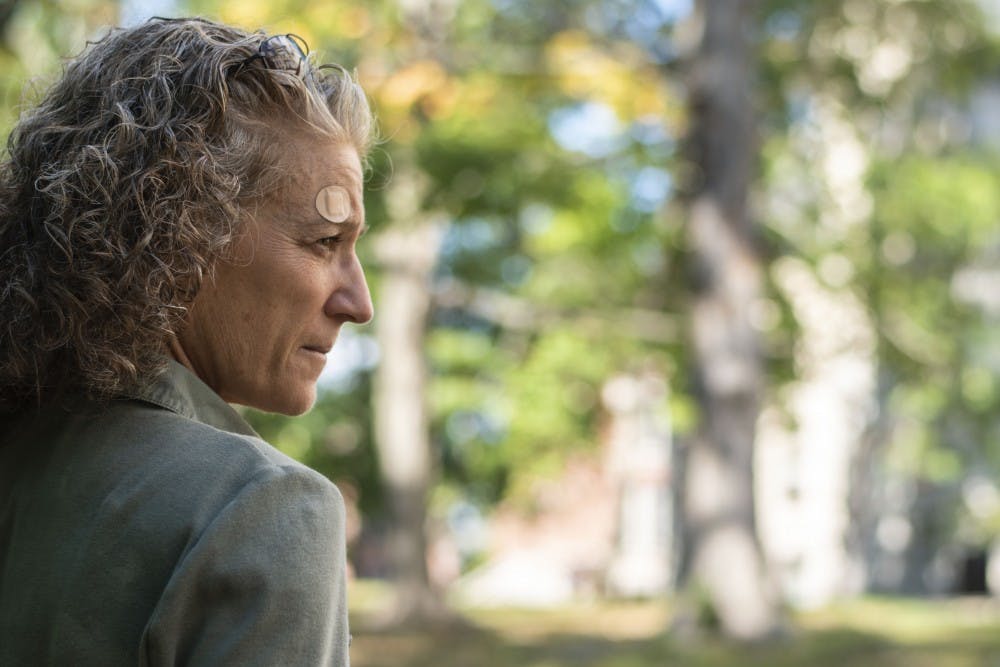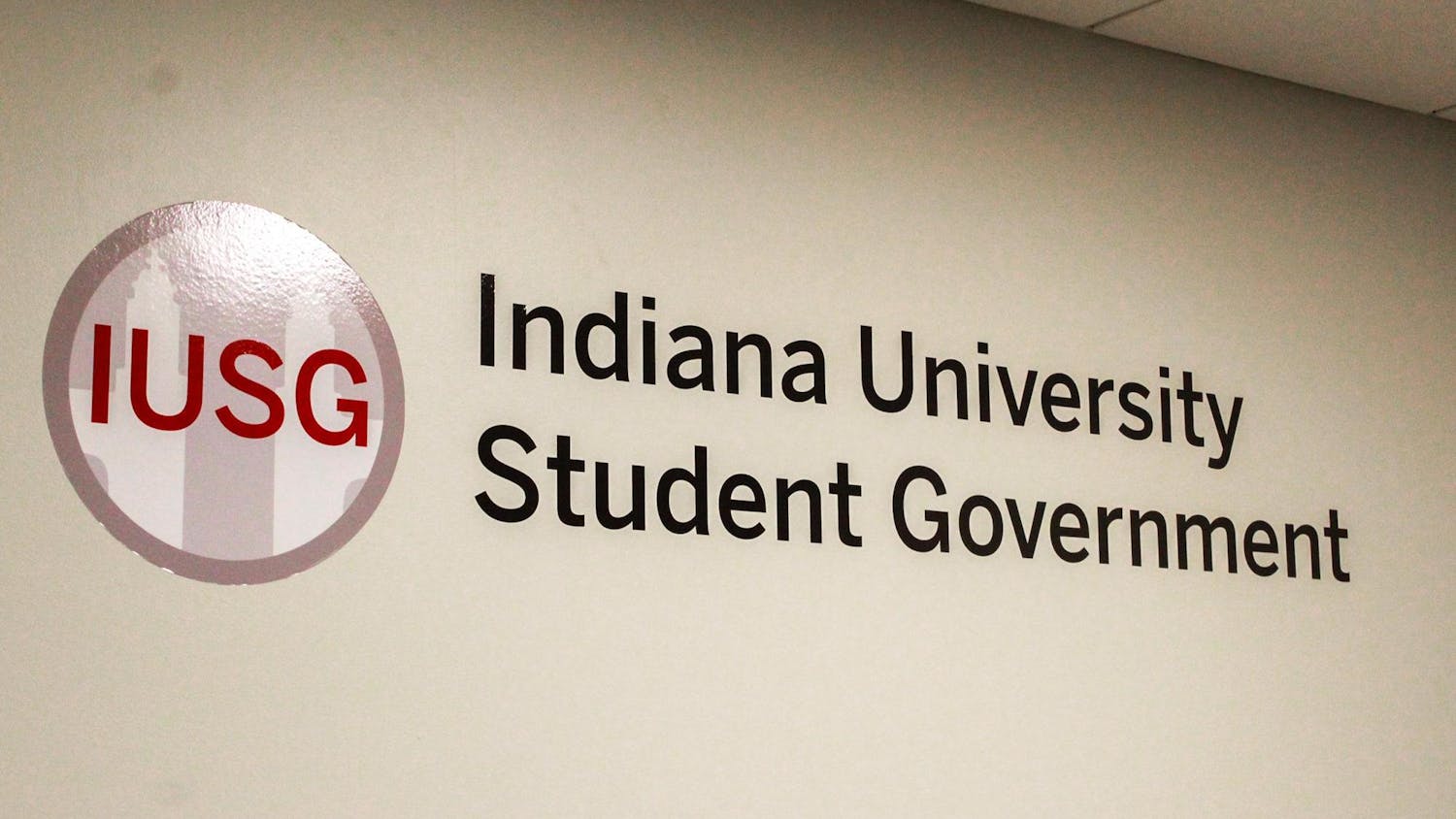Within the next month, IU’s trees will be ablaze with color. Earthy greens will transform into flaming reds and yellows, and the crunch of leaves will be heard underfoot.
Students will whip out phone cameras and eyes will be drawn toward the sky on walks to class as the more than 12,000 trees on campus become IU’s centerpiece. The thousands of trees at IU not only help the environment but may also have an effect on students' academic success.
These campus trees are often taken for granted, University Landscape Architect Mia Williams said.
Williams knows the campus trees well. She said the large number of sugar maples on campus are one of the reasons it's so colorful in the fall.
“It’s everything from yellow all the way through to a deep red in combination,” Williams said. “They look like they’re on fire.”
Williams’s eyes are always on the trees. It’s her job, but it’s also a passion and one she takes seriously as one of the main caretakers of IU’s trees. She sees their triumphs and struggles and believes them to be an integral part of both the natural and academic worlds.
Standing outside Lindley Hall on Friday, Williams motioned to Dunn's Woods. She often compares the trees to people.
“These guys in here have brothers and sisters kind of sharing the burden,” Williams said.
Campus trees not in Dunn's Woods or other densely wooded areas are more susceptible to root damage and are more exposed to storms.
Trees face challenges such as storms, pests, disease and drought, but they also face less obvious difficulties.
“It’s a hard place to live — a campus — for a tree,” Williams said. ”You’ve got people walking on their roots all the time. You’ve got mowers mowing grass around them all the time.”
Williams said the campus’s maple trees are under the most stress. She said she’s not sure the warming climate is a contributing factor, but the droughts of 2012 and 2013 still have visible lingering effects on the maples that indicate struggle.
With constant construction on campus, Williams said she tries her hardest to protect the trees and be selective about what gets cut down. Every year 200 to 300 new trees are planted on campus and up to 500 in a good year, Williams said.

Kristy Anderson, intern of Environmental Quality and Land Use in the Office of Sustainability said she’s visited urban campuses and thought about the lack of trees and its effect on the feel of the campus.
“I think I take it for granted from time to time until I don’t have it,” Anderson said. “I think we’re really lucky to have this woodland campus that we do.”
Anderson’s Environmental Quality and Land Use working group, comprised of students, faculty and staff, is currently working on their Strategic Landscape Plan which includes plans for pest and invasive species management, sustainable landscaping practices and how to encourage more people to interact with the outdoors on campus.
Suggestions from this plan could have a tangible effect on how students experience the outdoors.
“It’s really neat because we get to work with people in leadership positions on campus who can most effectively make change,” Anderson said.
Anderson said she appreciates the trees for their beauty but also the quantifiable values they offer to the ecosystem and peoples’ wallets.
One of the previous interns gathered data to determine the quantifiable value of trees on IU’s campus.
Anderson said the intern looked at how much carbon dioxide is absorbed by trees, how much the quality of the air was improved by trees’ presence, how much water was retained and erosion prevented from tree roots and how much energy and money was saved by shaded buildings.
“Our trees are such a wonderful resource for our physical health, our mental health and financially,” Anderson said. “They’re pretty great.”
However, Williams said because many of these benefits are not obvious, sometimes trees are not valued as they should be.
“Nobody sees dollars flowing in and out of a tree so it’s very hard for people to go, ‘oh that’s worth something’,” Williams said.
Williams said research is also showing a direct correlation between being in nature and increased academic performance.
Attention Restoration Theory, or ART, is a theory that asserts the benefits of being in natural spaces for mental and physical health. Improved academic performance has only recently been added to proven benefits of being in nature.
“It is striving to prove that experiences in natural settings helps us to reset our brains from all the constant phone and laptop use,” Williams said.
Spending even 15 or 20 minutes in nature can help students retain information better, according to research published in the Planning for Higher Education journal.
As a university landscape architect, Williams said she is very excited this theory is finally being solidified.
“I’m wildly interested in this because all of a sudden, my world of creating naturally beautiful spaces and shaping the land now collides with the academic mission of the University, and all of a sudden this is a big asset," Williams said. "This is something we can cultivate and grow to further accentuate what Indiana University can provide a student."
One of Williams most serious tasks as the University landscape architect is to ensure the generations to come have giant trees to walk among as well.
Williams said she thinks humans understand, subconsciously, that big trees mean that a place has stability and permanence.
“I think that makes us go, ‘OK, I can have free thought, I can explore, and I know I’m going to be OK,’” Williams said.





